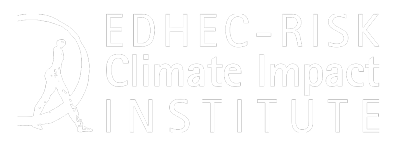
About EDHEC-Risk Alternative Indexes
Alternative investment currently represents 750 billion dollars in managed assets according to the latest estimations from TASS ResearchTM. Institutional investors’ increasing interest in alternative investment confirms the fact that it is rapidly becoming part of mainstream asset allocation decisions. At the end of 2003, over 55% of the assets managed by alternative funds came from institutional sources (compared to only 19% in 1992). The massive inflow of capital (according to TASS ResearchTM, the hedge fund industry reached a record flow of $72.2bn in net assets in 2003, with institutional investors being the main contributors) has thus brought an end to the relatively confidential nature of alternative investment strategies, which can no longer reasonably be considered to be a marginal activity within the asset management industry. Major asset management houses expect that the long-term growth rate of assets under management by hedge funds should be around 15%.
There are however a number of obstacles to the industrialization of the alternative investment industry. Its adoption by institutional investors will only come about if a serious effort is made in terms of transparency and rationalization of the investment management process and, above all, performance evaluation.
Due to the scarcity of information, the logic of representativeness through market capitalization is difficult to apply to the alternative universe. As a result, finding a benchmark that is representative of a particular management universe is not a trivial problem.
The different indexes available on the market are constructed from different data, according to diverse selection criteria and methods of construction, and they evolve at differing paces. As a result of this heterogeneity, investors cannot rely on competing hedge fund indexes to obtain a “true and fair” view of hedge fund performance. Investors are therefore at a loss when selecting benchmarks.
Given that it is impossible to come up with an objective judgment on what is the best existing index, a natural idea consists of using some combination of competing indexes (i.e. hedge fund indexes available on the market) to reach a better understanding of what the common information about a given investment style would be. One straightforward method would involve computing an equally-weighted portfolio of all competing indexes. Because competing indexes are based on different sets of hedge funds, the resulting portfolio of indexes would be more exhaustive than any of the competing indexes it is extracted from. We push the logic one step further and suggest using factor analysis techniques to generate a set of hedge fund indexes that can be thought of as the best possible one-dimensional summaries of information conveyed by competing indexes for a given style, in the sense of the largest fraction of the variance explained. Technically speaking, this amounts to using the first component of a Principal Component Analysis of competing indexes.
EDHEC-Risk Alternative Indices are thus able to capture a very large fraction of the information contained in the competing indexes (e.g. the average percentage of variance explained by the Indexes is 79.12% across all sub-universes).
On the one hand EDHEC-Risk Alternative Indices generated as the first component in a factor analysis have a built-in element of optimality, since there is no other linear combination of competing indices that implies a lower information loss. On the other hand, since competing indexes are affected differently by measurement biases, searching for the linear combination of competing indexes that implies a maximization of the variance explained, leads implicitly to a minimization of the bias. As a result, EDHEC-Risk Alternative Indices tend to be very stable over time and, as a result, easily replicable.
Return Estimates
Hedge Funds usually only disclose their performance a few weeks after month end. As a result, hedge fund indexes tend to publish their performance relatively late, which may leave practitioners at a loss. To compensate for this lack of timeliness, some index providers have decided to post preliminary returns on their website. In response to practitioners’ needs, the EDHEC Risk and Asset Management Research Centre releases the preliminary performance of its Alternative Indices on the 17th of M(onth) + 1.
- If all the indices entering into the composition of the EDHEC-Risk Alternative Index publish preliminary results, the preliminary return of the EDHEC-Risk Alternative Index can be obtained simply by applying the current index weighting to the preliminary results of its constituents.
- If one or several indexes entering into the composition of the EDHEC-Risk Alternative Index do not publish preliminary results, the weights of the “missing” indexes will be allocated proportionally to the other indexes, according to their initial weight. The preliminary results of the EDHEC-Risk Alternative Index can then be obtained by applying the modified index weighting to the preliminary results.
It should be noted that preliminary returns are only meant to be used as an initial estimation of the indexes’ performance. The final returns of the EDHEC-Risk Alternative Indices will be published on the web site on the 3rd working day of M(onth) + 2, once all the indexes entering into their composition have published their final results. Only these returns will constitute the official historic performance of the EDHEC-Risk Alternative Indices.
Attachments
Presentation of the EDHEC-Risk Indices at GAIM 2003
EDHEC-Risk Indices Composition – Latest update (June 2018)
Full presentation brochure of the EDHEC-Risk Alternative Indices

